With three issues a year, Indesign magazine is Australia’s leading voice in commercial architecture and design with an emphasis on sectors of workplace, education, hospitality, retail, healthcare and aged care. For 20 years, Indesign’s provocative and insightful coverage and conversations have been influential in shaping the Australian commercial design landscape. It is the premier professional resource for practicing architects, designers and specifiers, capturing the design thinking and thought leadership behind the region’s most outstanding projects, products and practices.
FROM THE EDITOR & PUBLISHER
INDESIGN
Introducing the Voices of Indesign • The ‘Life-Work Balance Issue’
THE ULTIMATE INDUSTRY CHEAT SHEET
Natural elegance • Defined by elegance and performance, Cashmere Hill embodies Yoke Architecture’s vision with Neolith.
Silent Circularity • Autex Acoustics set a new benchmark, proving thoughtful material choices shape the future of sustainable buildings
The future looks bright • The brainchild of design figurehead John Eussen, the Eussen Design Competition has once again delivered excellence in student competition.
INDESIGN LUMINARIES
An extraordinary architect • His name is revered and his work acclaimed. John Wardle continues to make his presence felt on the built landscape of Australia like no other.
A design finesse • As a Luminary this year, Joyce Wang is the epitome of someone who leads by example and creates her own pathway of design.
The visionary • Throughout his life, Ong Tze Boon has made a real difference to both people and place. He is a man of vision who has changed the architectural landscape of Singapore and South-East Asia and strives to make a better world for the future.
The culture of architecture • Leading through design with culture at the fore, Andrew Tu’inukuafe and Barrington Gohns are making change that benefits people and place throughout our region as Luminaries in 2025
Bring on the love • It’s an uncommon opportunity for a medium-sized architecture practice known for its residential and educational work to be given a landmark building in the centre of one of the world’s most notable cities. After 25 years of practice, Rachel Nolan and Patrick Kennedy and their team at Kennedy Nolan were given exactly that, with Melbourne Place, a fourteen-storey hotel right in the heart of town.
Domesticity through adaptive reuse • Less is more in the case of Sanders Place, a co-working destination located in Richmond, Melbourne, whose ageing bones have been stripped back, broken apart, and lovingly fused back together in a fearless and devoted act of architectural adaptive reuse.
Ko au te awa, ko te awa ko au • There’s a well-known whakataukī (proverb) among the Whanganui iwi (people) that goes ‘Ko au te awa, ko te awa ko au’. It translates as ‘I am the river, and the river is me’ and it summarises the relationship between iwi and the Whanganui River, asserting iwi rights to the land and river, which runs through the city of Whanganui on the North Island of New Zealand. It carries tūpuna (ancestors) and evokes wai whakarite (spiritual practices) and in 2017, was the first river in the world to be granted personhood status due to its embodied spirit and significance to iwi.
Raw • Built entirely from the waste material and form work of construction, SpActrum’s new Shanghai office is an exercise in rethinking the way spaces are built.
Layering of past and present • J.AR Office’s redesign of Brisbane culinary institution Gerard’s anchors itself in permanence. Eschewing trends for timelessness, this reimagining creates moments of ritual and respite, where memory and materiality intertwine.
A microcosm of shared values • Transitioning from day-to-night, this...
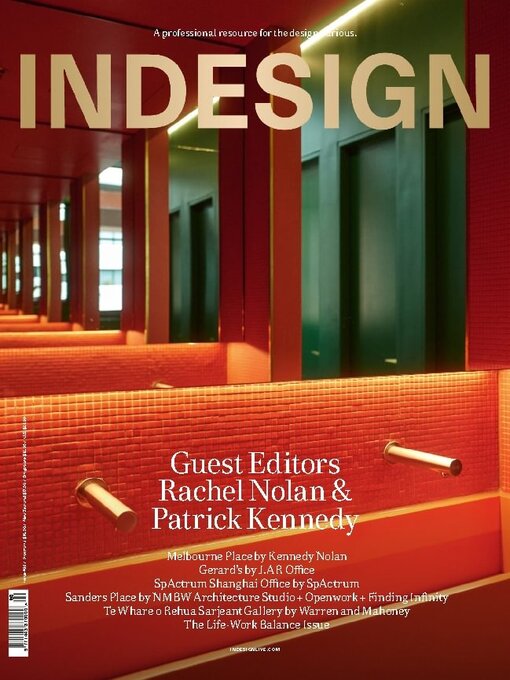
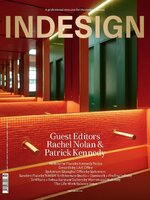 INDESIGN #93
INDESIGN #93
 INDESIGN #92
INDESIGN #92
 INDESIGN #91
INDESIGN #91
 INDESIGN #90 - City Futures
INDESIGN #90 - City Futures
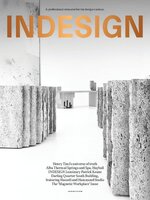 INDESIGN #89
INDESIGN #89
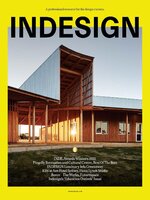 INDESIGN #88 - TBC
INDESIGN #88 - TBC
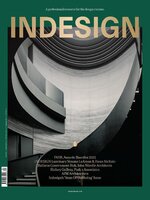 INDESIGN #87 - TBC
INDESIGN #87 - TBC
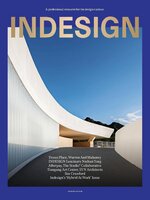 INDESIGN #86 - TBC
INDESIGN #86 - TBC